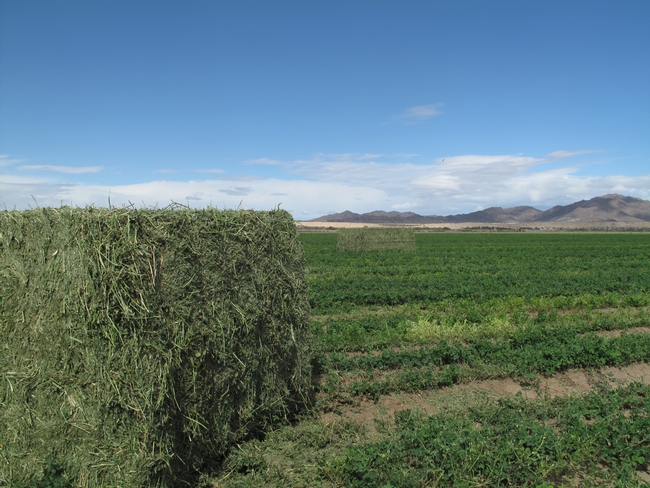Folks, it's easy to be cynical about our democracy and the gridlock in Washington – but at some level we know our government is only as good as we are as citizens.
Case in point: whether APHIS (The Animal and Plant Health Inspection Service) should approve the de-regulation of a new Genetically-Engineered (GE) trait in alfalfa. This trait is currently in field testing, and should be released in 2016.
Now pending your comment. Due June 30.
Low Lignin Alfalfa may have the potential for higher quality,as well as more flexibility in harvest scheduling.
YOU are the alfalfa people, and should have the greatest interest in this subject. Interested enough to subscribe to an ALFALFA BLOG (for Pete's sake, who would ever do that?).
Please take a look at the comments listed to date (91 so far)
http://www.noticeandcomment.com/APHIS-2013-0013-fcol-10384.aspx
PROS: There are quite a few of these from farmers who are eager to give the new technology a chance, mostly dairy and hay producers, with seed people and scientists, pointing out the potential benefits of the reduced lignin trait.
CONS: Those weighing in against are mostly opposed to GE crops in general, but the most cogent argument against was put together by Wenonah Hauter from Food and Water Watch activist group calling for further testing. It's on the APHIS website.
Take a look. Leave your own comments: http://www.noticeandcomment.com/APHIS-2013-0013-fcol-10384.aspx
FYI, my posted comments are below.
Dan Putnam UC Davis.
*****
Regarding Docket #APHIS-2013-0013
I am a crop scientist who works full time with research on alfalfa production, quality, irrigation, varieties and other subjects.
This technology holds considerable promise of benefits to growers and to animal managers - furthermore, if I felt this trait represented important risks to animal health, human health, or to the environment, I would adamantly oppose its introduction. However, that is not the case.
It has several potential benefits to farmers and to the environment. Here are the promises:
* Lignin is an important part of the plant, holding up the stem, but it contributes essentially zero to the energy feeding value of forages - thus reducing the lignin % should improve the energy yield of the forages and therefore milk production as well as the value of the crop (per ton) to dairies and to hay producers. There is no evidence to date that the reduced lignin results in increased lodging.
* The modified lignin is likely to change the complex between lignin and cellulose and hemi-cellulose (the digestible components of the cell wall), improving the utilization of cellulose and hemi-cellulose as well as reducing the non-digestible lignin.
* Higher degree of digestibility in forages will improve the feed efficiency, and should reduce the environmental impacts of dairy production (measured by manure produced per gallon of milk).
* This trait represents economic opportunities for hay farmers, dairy producers as well as seed producers.
* Even though this trait is primarily a quality trait, it is (perhaps more importantly) a yield trait. This is because the reduced rate of lignification over a 20-40 day period will enable later harvest schedules - this (universally, according to the field data), should improve yields compared with early cutting schedules. The improved yields (while maintaining quality) should improve profitability for the alfalfa growers as well as dairy producers.
* The possibility of higher yields, longer cutting schedules, will improve water use efficiency, and reduce costs of production and fossil fuel impacts (fewer harvests), while improving yields and maintaining quality.
* This trait may enable more flexibility by growers when rain or other influences on harvest schedule currently force them to accept low quality, late harvested forages.
* The potential for the breaking of the yield-quality tradeoff (which is what we have with current varieties), is a long-welcome innovation and farmers should be allowed to see if this trait fits their needs.
The key risks of the introduction of this technology (as with Roundup-Ready Alfalfa) are to prevent gene flow during seed production, to protect non-GM (organic) seed production - however, protocols have been developed for that purpose, so this risk can be managed.
Organic hay production has increased very significantly over the past 9 years since the introduction of Roundup Ready alfalfa, so there is little evidence that GM alfalfa has hurt organic hay growers - and it is important to assure that they can continue to thrive with the introduction of GE crops.
This trait may not fit all situations (which is the case with the Roundup-Ready technology), but it is important that growers have the chance to try and test on their farms new innovative technologies that have been determined to be safe for the environment and food safety.
I support the timely deregulation in whole of biotechnology-derived Reduced Lignin alfalfa.
